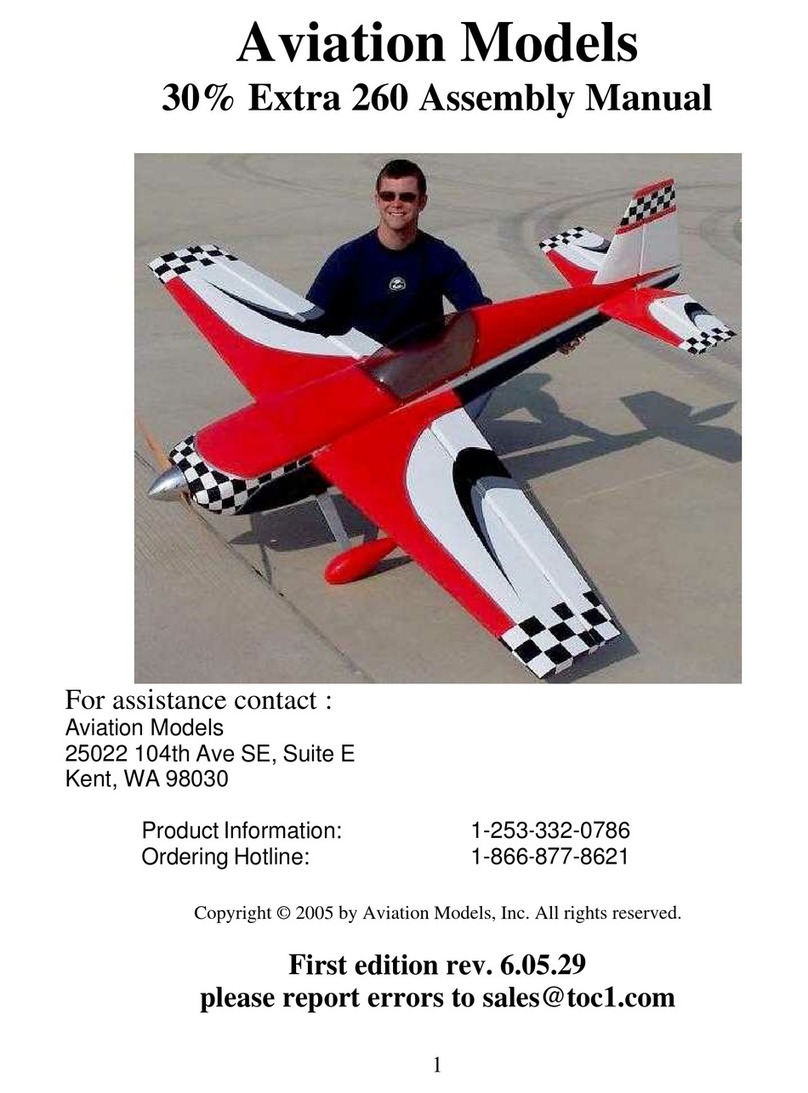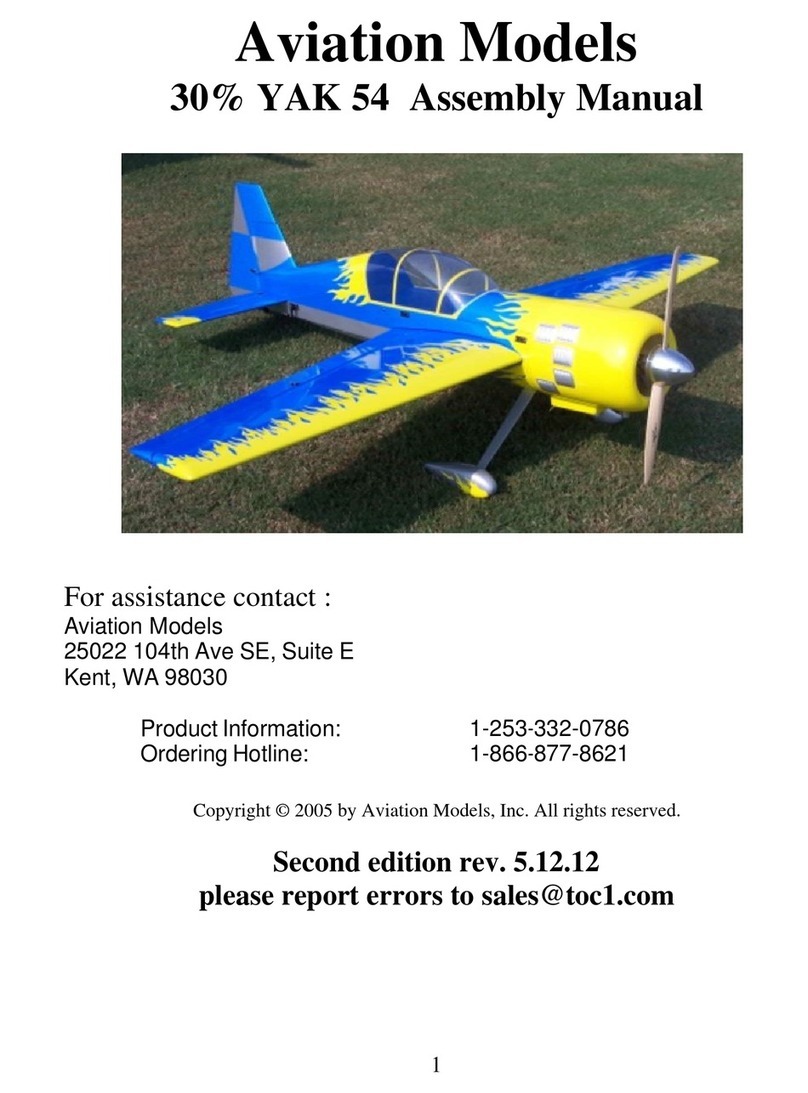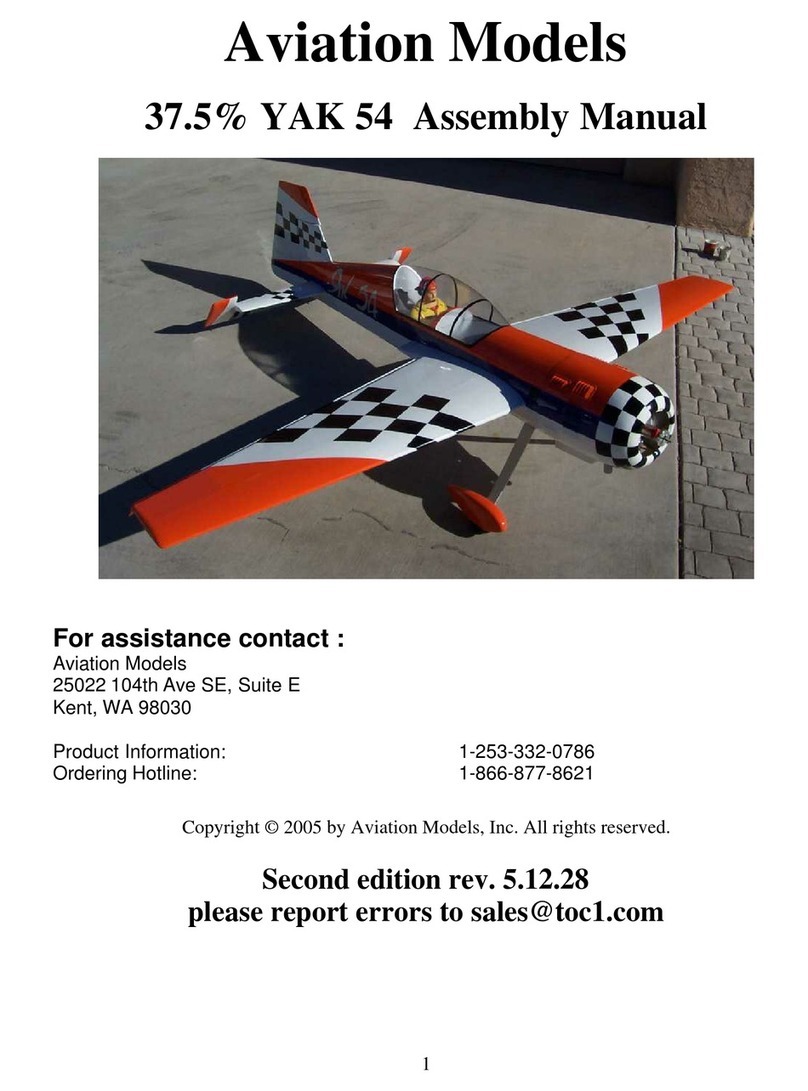
Using This Manual
When you start a construction section, it is a go
od idea to first read that entire
se
c
tion before cutting or drilling or gluing. For example, if you are about to begin
the section called “Mount the Hatch and Canopy”, then read that entire section
b
e
fore doing anything else. Toward the end of that secti
on, there is an option to
paint frame line on the inside of the canopy. If you’ve already glued it on, it will
be i
m
possible. Reading the entire section will give you a good feel of where you
are headed and any options available.
Known issues and improv
ements
There are a few areas where, at this unassembled stage, you can improve the
final results of your assembly pr
o
ject. There are many items that cannot be
addressed on the a
s
sembly line due to cost and possibly because not every
improvement would be welcomed by every builder. Here are a few items that
have come up over time.
Go over the covering with a heat gun or iron
. The covering tends to get
loose over time and with changes in temperature and humidity. It may have
come out of the box with wrinkles, I can assure you it did not go into the box
that way.
Clean out the hinge holes.
Without removing any wood, use a very sharp
X
-
acto knife and remove any covering that may have been pushed into the
hinge holes. It is very important that the glue sticks to the wood and not to the
covering.
Lightweight landing gear and wing tube. In the 33% YAK we have tried to
pr
o
vide as much flexibility as po
s
sible with regard to engine choice. It is
sometimes difficult to be all things to all people. In any case, we hav
e
provided very strong landing gear and wing tubes, which are suitable for any
type of engine and flying but add some weight to the finished plane. Some
pilots chose to order carbon f
i
ber landing gear and/or wing tubes. This can
save several ounces of weight.
Hardeningholes.
The fuselage sides on this plane are made of balsa which
in ce
r
tain areas is doubled by lite
-
ply. Using wood screws in balsa is
diff
i
cult because balsa is very soft. It’s a good idea whenever you drill a hole
that must accept a wood screw to put a drop of thin CA into the hole and then
if necessary re
-
drill the hole. The CA will wick into the wood and harden it,
adding strength in that area.






























